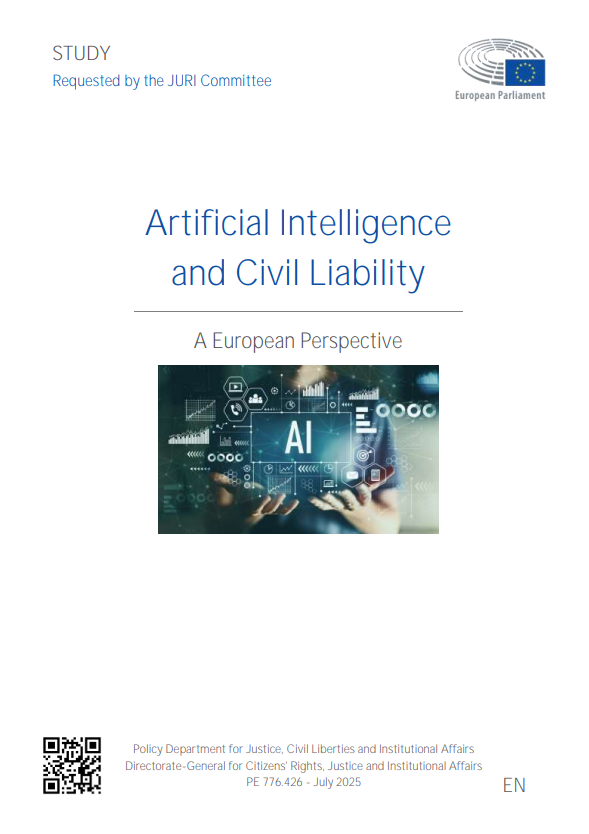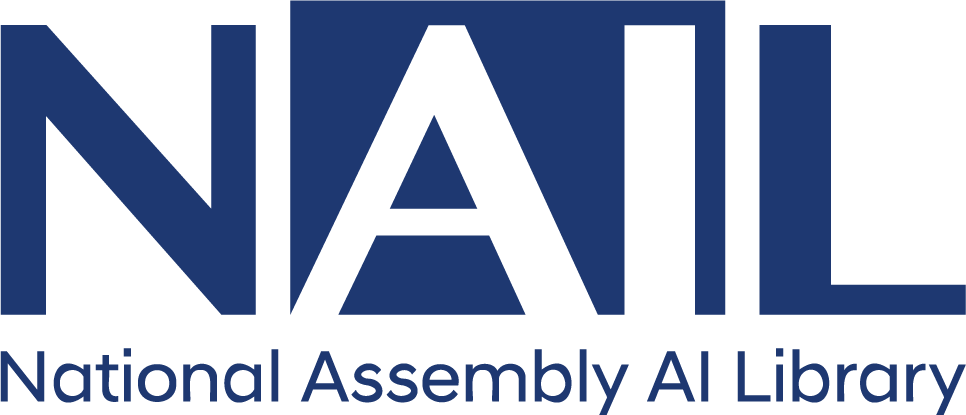
목차
LIST OF ABBREVIATIONS 7
LIST OF TABLES 8
LIST OF FIGURES 8
LIST OF EXAMPLES 8
EXECUTIVE SUMMARY 9
1. WHY REGULATE CIVIL LIABILITY IN THE AREA OF ARTIFICIAL INTELLIGENCE? 14
1.1. Introduction 16
1.2. A brief history of technology regulation in Europe: a great reversal 16
1.2.1. European Parliament Resolution on Civil Law Rules on Robotics 16
1.2.2. Commission Communication “Artificial Intelligence for Europe”17
1.2.3. High-Level Expert Group on AI: Ethics Guidelines and ALTAI 17
1.2.4. Expert Report on Liability for AI and Other Emerging Digital Technologies 18
1.2.5. The European Parliament's call for experts on AI and civil liability 19
1.2.6. European Parliament Proposal for a Regulation on Civil Liability for AI 19
1.2.7. Proposal for an AI Act 20
1.2.8. Proposal for reform of the PLD and proposal for an AILD 21
1.2.9. Approval of the revision to the PLD and debate on withdrawal of the AILD 22
1.2.10. A Commentary 26
1.3. Three fundamental questions (and three policy reasons) 26
1.3.1. Legal gaps and the personality of the machine: a critical account 27
1.3.1. Legal gaps and the absence of adequate protection: the need for clarification 29
1.3.2. Avoiding legal fragmentation 30
1.3.3. The efficiency of the legal system 33
1.4. What is the purpose of regulating civil liability for AI? 34
1.5. The risk of overregulation and the cost of non-Europe 36
2. IS THE CURRENT REGULATORY FRAMEWORK SUFFICIENT? 38
2.2. A step back: what concerns ought a dedicated civil liability framework tackle? 41
2.2.1. Is the European regulatory framework rooted in the PLD fit for purpose? 42
2.3. An assessment of the Product Liability Directive, and its failure(s) 51
2.3.1. A brief theoretical introduction: the standard of liability 52
2.3.2. Continued: The notion of defect 53
2.3.3. Pursuing ex ante deterrence: the importance of reputation (not liability rules) 54
2.3.4. Ensuring victim compensation: the failure of the PLD 56
2.3.5. The peculiarities of advanced technologies, and their interference with the PLD 58
2.3.6. The change in role of the PLD due to increasing automation in AIS, and the need for reform 59
2.4. Is the reform of the PLD sufficient to govern AIS? 60
2.4.1. The notion of product, defect, and the unaltered liability rule 61
2.4.2. Rules on disclosure and presumptions 63
2.4.3. The new PLD under scrutiny: the unsolved issues 66
2.5. What problems are left unsolved and why the sole revision of the PLD is insufficient 68
3. THE PROPOSAL FOR AN AI LIABILITY DIRECTIVE: A CRITICAL ASSESSMENT 71
3.1. Introduction 73
3.2. The proposal for an AI Liability Directive in the intention of the European Commission: complementarity and independence from the PLDr 74
3.2.1. Continued: the Commission's awareness of the limitations to fault-based rules 76
3.3. A brief overview of the liability rules according to AILD 77
3.3.1. Disclosure obligations 77
3.3.2. The presumption with respect to causation 78
3.3.3. Continued: provisions applicable only to h-AIS 79
3.3.4. Continued: a critical assessment 80
3.4. The AILD as a solution to the issue of civil liability and AI: a critical assessment 83
3.4.1. A technical perspective: the unintended interferences with MS's general principles of tort law 84
3.4.2. Continued: complex application, limited efficiency 84
3.4.3. Continued: Limited cases of concrete application 85
3.4.4. Continued: the multiplicity of alternative interpretation and the role of courts 86
3.4.5. Continued: the underdefined and excessively broad scope of application 86
3.4.6. Continued: the problem with definitions 87
3.4.7. Some policy implications: inefficiency, lack of adequate protection and risk of disapplication 87
3.4.8. Continued: uncertainty and (the risk of) fragmentation 88
3.4.9. Continued: a politically-complex task of unnecessary harmonization of tort law 88
3.4.10. The need for a special, strict liability rule 89
4. CONCEIVING AN IDEAL REGULATORY FRAMEWORK FOR CIVIL LIABILITY AND AI 90
4.1. Introduction 92
4.2. A well-defined scope of application 93
4.2.1. Selecting what AIS to regulate 94
4.2.2. Alternative criteria: regulating classes of applications 96
4.2.3. Continued: regulating high-risk AIS 98
4.3. A strict liability rule 99
4.3.1. The operator's liability example: an overview 100
4.3.2. The liability rule(s) 101
4.3.3. The efficient aspects of the proposal: a truly strict liability rule, corresponding to a compensatory rationale, achieving clarity and foreseeability of outcomes 102
4.3.4. The multiplicity of operators and the insufficiency of joint and several liability as a solution to causal uncertainty 103
4.3.5. A one-stop-shop approach and a risk management perspective 106
4.3.6. Defences and exclusions 108
4.3.7. Rights to sue in recourse along the value chain 109
4.3.8. Compensable damages 110
5. POLICY OPTIONS 111
5.1. Introduction 113
5.2. OPTION 1 Withdrawal of the AILD 113
5.2.1. The balance between European and MS law 113
5.2.2. The regulatory framework and its anticipated efficiency 114
5.2.3. The impact on innovation 114
5.3. OPTION 2 Maintaining the AILD without substantive structural modifications 115
5.3.1. The balance between European and MS law 115
5.3.2. The regulatory framework and its anticipated efficiency 116
5.3.3. The impact on innovation 116
5.4. OPTION 3 Maintaining the AILD, introducing a fault-based liability rule for h-AIS 117
5.4.1. The balance between European and MS law 120
5.4.2. The regulatory framework and its anticipated efficiency 120
5.4.3. The impact on innovation 121
5.5. OPTION 4 Maintaining the AILD, introducing a strict liability rule 121\
5.5.1. The balance between European and MS law 123
5.5.2. The regulatory framework and its anticipated efficiency 124
5.5.3. The impact on innovation 125
CONCLUSIONS 126
REFERENCES 128



